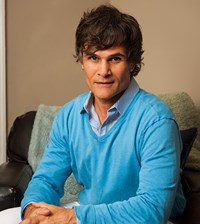I was recently asked by a twitter follower how much vitamin D is needed, and how much is too much. This question is much more complex than can be done justice in 140 characters, so I decided to write a quick guide to determining your vitamin D needs.
You’ll need to start by getting your blood D levels checked. Okay, there’s lots of differing opinion on how, and what, and where, and so forth. Let’s just keep things simple: Next time you are at the doctor’s getting a physical, ask him or her to do a vitamin D test (serum 25-hydroxyvitamin D test). They will run the blood you are already providing them with, although my physician often forgets, requiring me to go back in for a second blood letting. Whatever–it’s worth it to me.
You’ll probably have to pay for the test if you live in the U.S. The last one I got cost me somewhere in the $200 range, and that was after insurance covered a minimal portion. Listen, I believe so strongly in getting blood levels of D checked, that the cost is also worth it to me. (Life Extensions Foundation endorses a $47 test that you can get by calling the 800-number in their article here).
You will get your results within a couple of days. The numbers can vary depending on the lab, but good reference points for adults are between 30-100 ng/mL for optimal levels. Levels of Serum D between 20-29 ng/mL indicate insufficiency, while anything below 20 ng/mL is a frank deficiency (that includes in children as well, although anything above 20 ng/mL is considered optimal for pediatrics).
If your blood D levels come in at 29 ng/mL or less, your doctor may prescribe 50,000 international units (IU) for a short course to bring you back up to par. After that, taking anywhere from 1,000-10,000 IUs per day is recommended to keep levels up, of course, those numbers depend on the source. The standard is that you want to bring the numbers above 30 ng/mL, but according to some, optimal levels are above 50-60 ng/mL (this is the range I’d shoot for as I trust these sources, and here).
Obviously, what you need depends on your current levels, so again, getting tested is a must. I want to emphasize that vitamin D is the sun-nutrient, and in my opinion, getting adequate sunlight is the best approach. But I do realize that parts of the world get very little sunlight at various times of the year, so I am a believer in supplementation.
So, there is no easy answer to the “how much vitamin D” question. Get tested, find where you are, and then go from there. Hope that helps.














